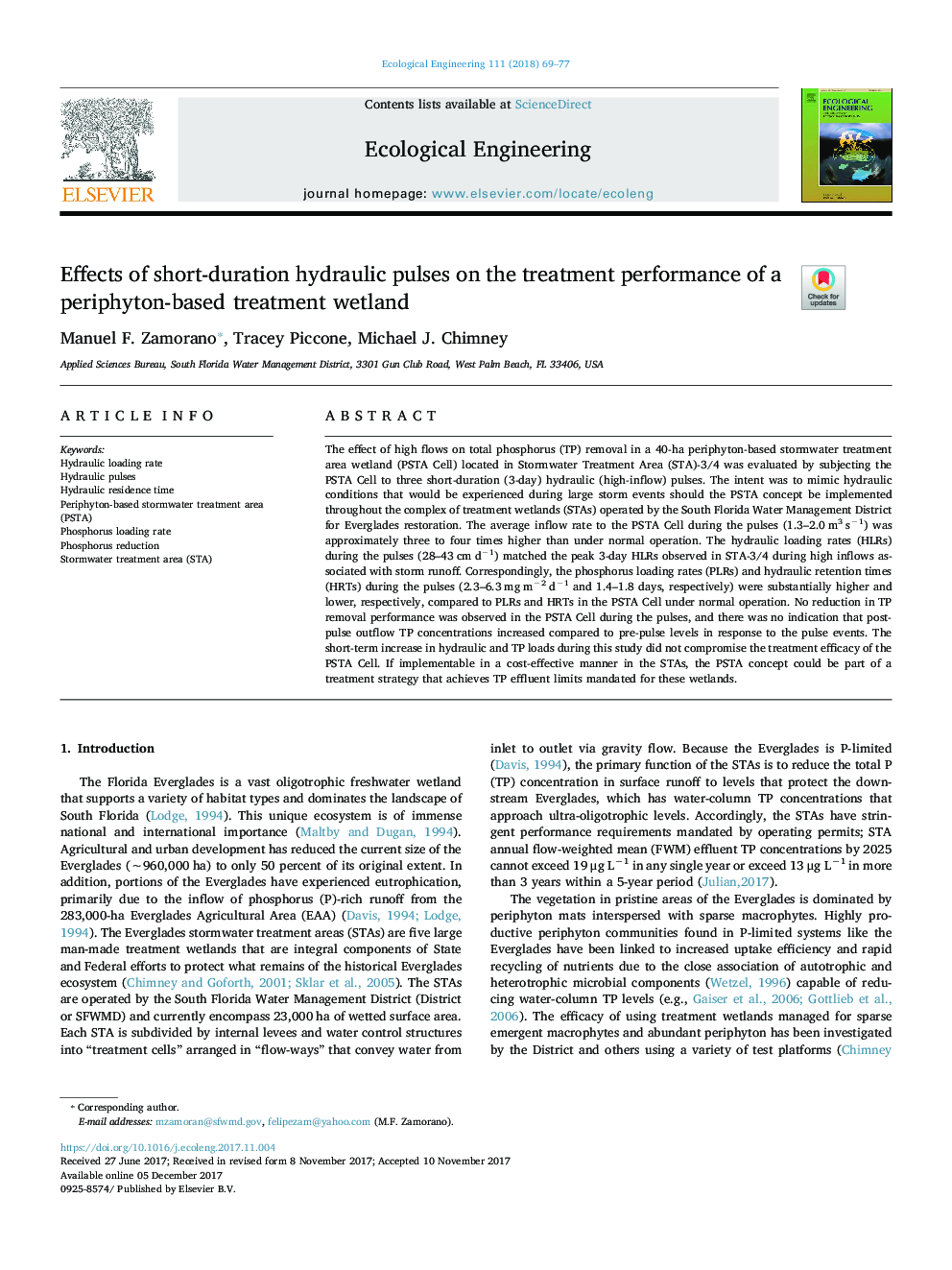| Article ID | Journal | Published Year | Pages | File Type |
|---|---|---|---|---|
| 8848095 | Ecological Engineering | 2018 | 9 Pages |
Abstract
The effect of high flows on total phosphorus (TP) removal in a 40-ha periphyton-based stormwater treatment area wetland (PSTA Cell) located in Stormwater Treatment Area (STA)-3/4 was evaluated by subjecting the PSTA Cell to three short-duration (3-day) hydraulic (high-inflow) pulses. The intent was to mimic hydraulic conditions that would be experienced during large storm events should the PSTA concept be implemented throughout the complex of treatment wetlands (STAs) operated by the South Florida Water Management District for Everglades restoration. The average inflow rate to the PSTA Cell during the pulses (1.3-2.0 m3 sâ1) was approximately three to four times higher than under normal operation. The hydraulic loading rates (HLRs) during the pulses (28-43 cm dâ1) matched the peak 3-day HLRs observed in STA-3/4 during high inflows associated with storm runoff. Correspondingly, the phosphorus loading rates (PLRs) and hydraulic retention times (HRTs) during the pulses (2.3-6.3 mg mâ2 dâ1 and 1.4-1.8 days, respectively) were substantially higher and lower, respectively, compared to PLRs and HRTs in the PSTA Cell under normal operation. No reduction in TP removal performance was observed in the PSTA Cell during the pulses, and there was no indication that post-pulse outflow TP concentrations increased compared to pre-pulse levels in response to the pulse events. The short-term increase in hydraulic and TP loads during this study did not compromise the treatment efficacy of the PSTA Cell. If implementable in a cost-effective manner in the STAs, the PSTA concept could be part of a treatment strategy that achieves TP effluent limits mandated for these wetlands.
Related Topics
Life Sciences
Agricultural and Biological Sciences
Ecology, Evolution, Behavior and Systematics
Authors
Manuel F. Zamorano, Tracey Piccone, Michael J. Chimney,
